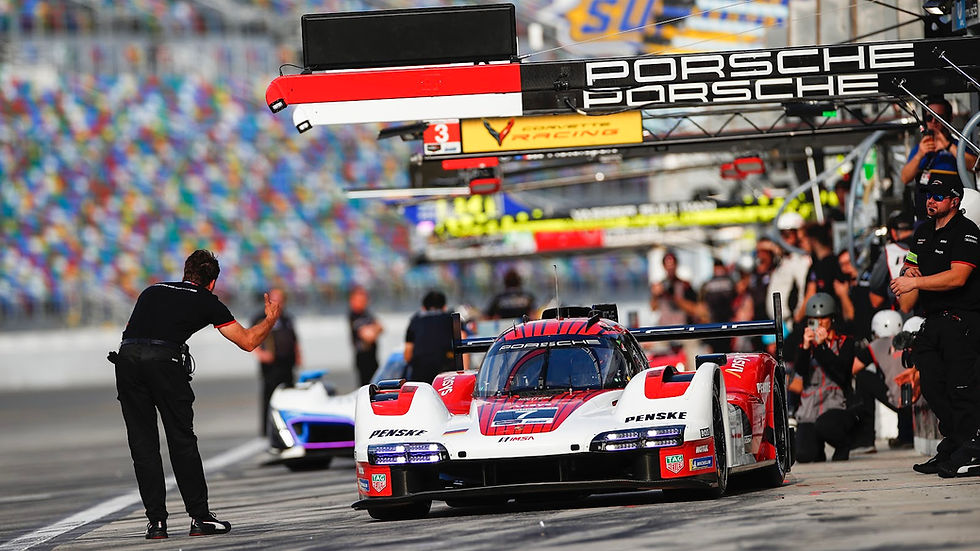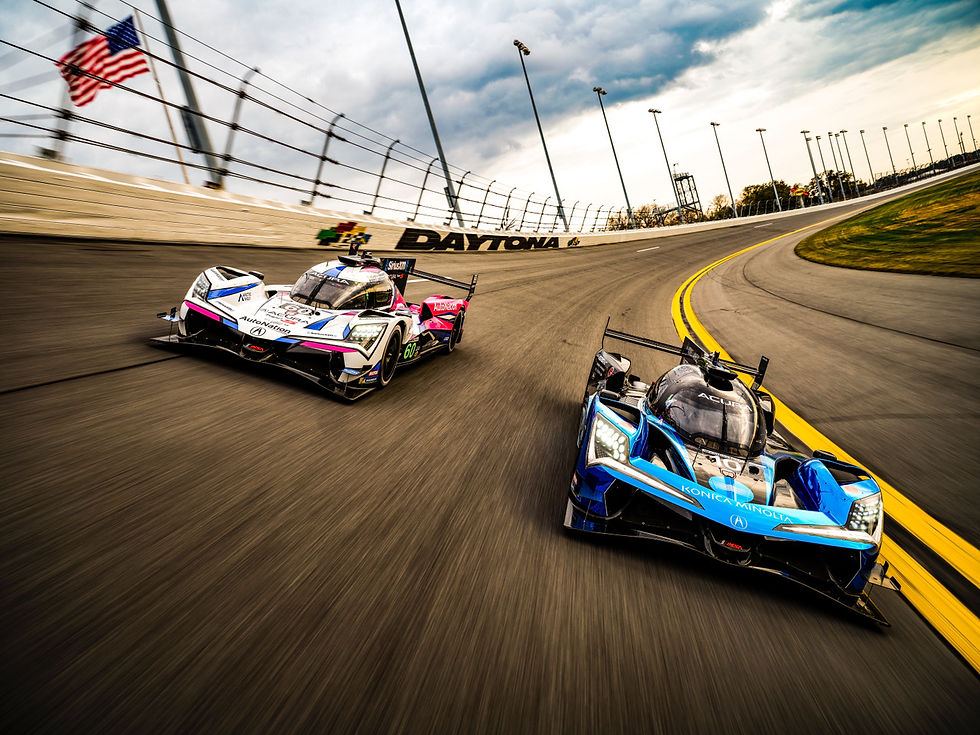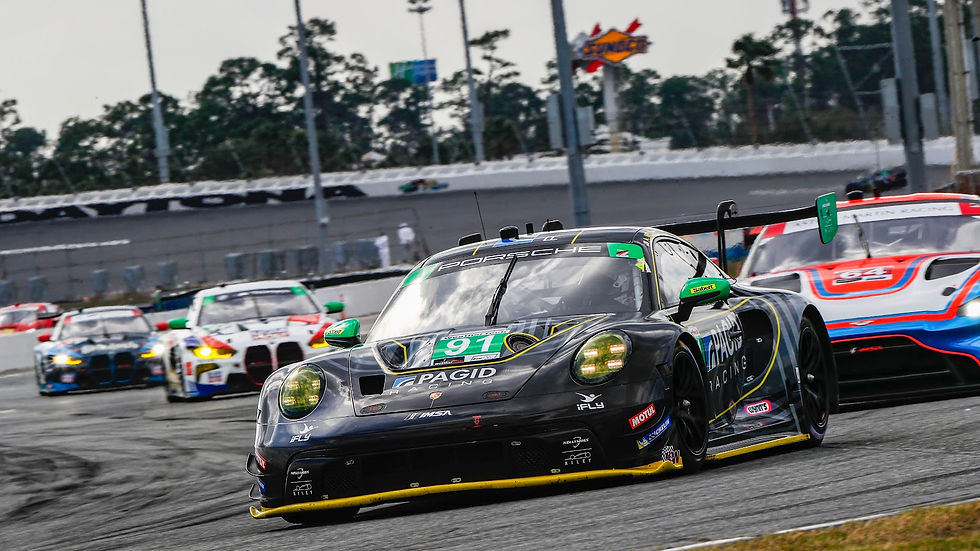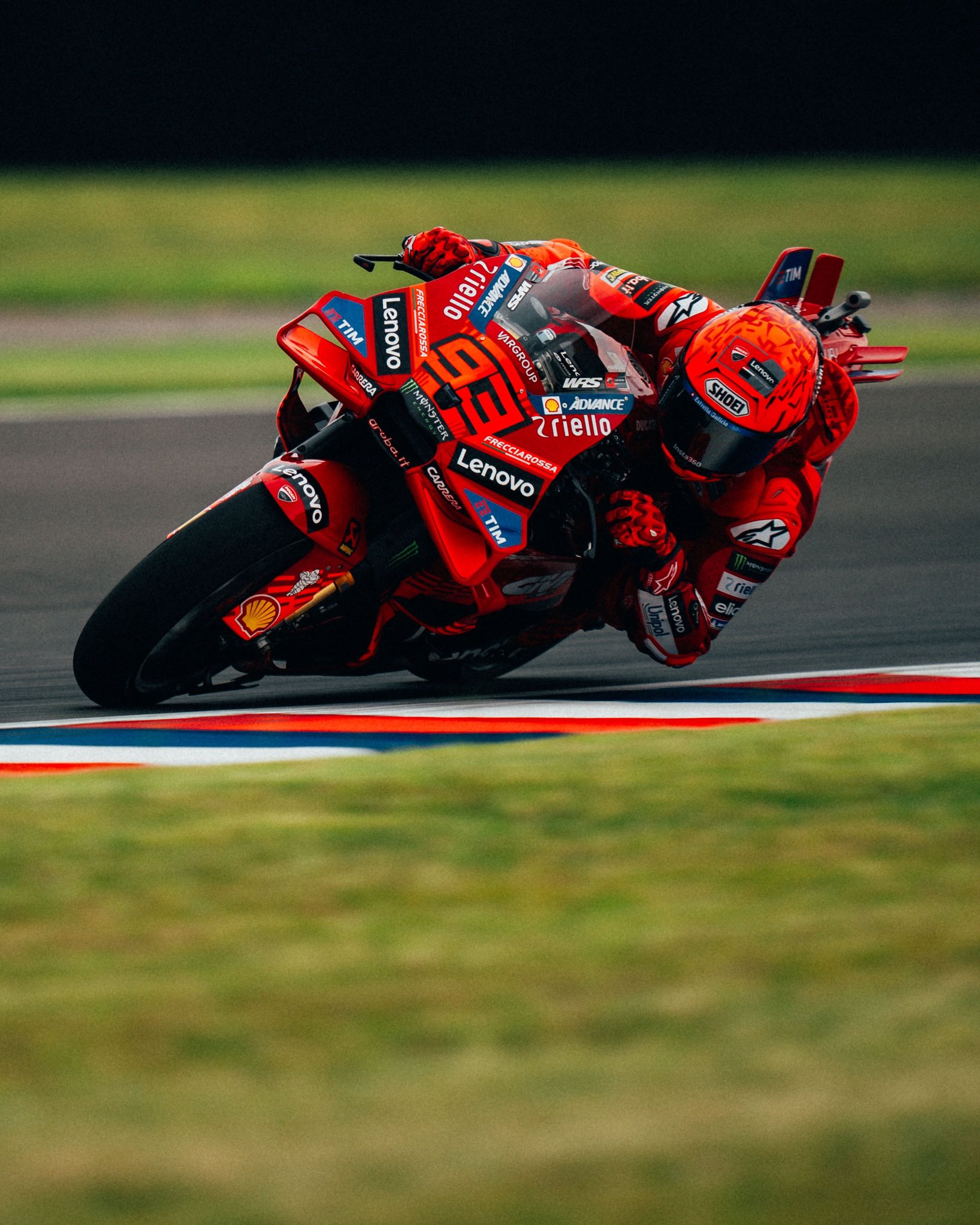What we learned from the Roar at Daytona
- Evan Veer

- Jan 27, 2023
- 4 min read
Written by Evan Veer, Edited by Sasha Macmillen

North-American sportscar racing is back already with IMSA’s ‘Roar Before the 24’ as preparation for the season opener began at the Daytona International Speedway. The Roar consists of several practice sessions at various times of the day to get the teams and drivers familiar with the varying track conditions, and the weekend is closed off with the qualifying session that sets the grid for the 24 hour race the following week. Qualifying is split up into four sessions with one for each prototype class and a combined session for the GT’s.
All eyes were on the brand new GTP class and its four manufacturers to see how their prototypes would fare on their debut. The LMDh ruleset has brought IMSA’s top class into the hybrid age, but with such a large step forward in technology, you can often expect a wide range of issues to appear, and although these cars have already had months of testing, we definitely should not expect a trouble-free race when it comes to reliability. That being said, there seemed to be very few reliability issues during practice, with the most notable problems being a case of suspension trouble for each of the Porsche 963’s.
Although the Roar’s practice sessions don’t give away a lot of information about the cars’ race pace, we did get a glimpse at where each car stands on one lap pace in the qualifying session that ended the weekend. The Acura ARX-06 had been topping the timing sheets all weekend, but when it mattered the Porsches put up a fight and in Nick Tandy in the #6 even looked to be on track for pole, until he crashed the car in the Le Mans chicane at the end of his lap. Although the damage should be fixable, the team certainly won’t be happy having to make such major repairs when spare parts are hard to come by.
After the track was cleared there was just enough time for a final run in which Tom Blomqvist put his #60 Acura on pole with a time only a few tenths behind last year’s top time, with the #7 Porsche and #10 Wayne Taylor Racing Acura following at just a tenth and a half behind.
Three Cadillacs followed closely, with the #01’s lap coming in at just over two tenths behind pole. Things didn’t look too good for BMW as their cars qualified last almost 7 tenths from the leaders, though luckily for them the last slot on the grid will be taken by the #6 Porsche as their laps were deleted for causing a red flag.

In any case we shouldn’t read into these results too much as there is still a very long race ahead, and even if we assume that all cars ran as fast as they possibly could, then we still are yet to find out how strong each manufacturer is in other crucial areas like fuel mileage or tyre management.
The LMP2 field is looking competitive as ever, but its qualifying session was cut short by a crash for the #8 Tower Motorsport along with a smaller incident for the #55 Proton Competition car, with both cars having their laps deleted for causing the subsequent red flag, meaning they will be starting at the back of the LMP2 pack.
PR1 Mathiasen’s #52 car will be taking its fourth pole start in a row after another strong qualifying from Ben Keating ahead of the #35 and #11 TDS cars in second and third respectively.
Down in LMP3 the Ligier chassis seems to have a solid advantage over its rival Duqeine, as none of the four Duqeine cars managed to beat any of the Ligiers in their qualifying runs.
In qualifying for the GTD and GTD PRO classes, the Mercedes AMG GT3’s showed to be the favourite as they claimed the first two rows of the grid, taking pole in both classes. Both GTD classes will be taking the start together with a mixed grid, meaning that unlike in the Prototype classes any pro cars that qualified behind non-pro cars will have to start behind them too, and since the only major difference between the classes is the requirement for GTD to use a mixed pro-am driver lineup, there was very little between them in qualifying, as the leading GTD PRO ended up behind three GTD’s on the grid.

Both Porsche and Ferrari will have their new GT3 models making their official race debut at Daytona, but while the Ferrari 296 seems to be getting on somewhat decently, the same cannot be said about Porsche’s newest 911 GT3, which has consistently been dangling at the bottom of the timing sheet all weekend. Such a large deficit would understandably cause a manufacturer to ask to be allowed better performance under Balance of Performance, but as of right now it seems unlikely to change. This is likely because IMSA tends to play it safe on new cars to prevent mischievous manufacturers from trying to gain an advantage by hiding the true pace of their car until the race.
With the grid set and all cars shaken down, it’s time to get hyped for the start of the 2023 IMSA season and the start of a new golden age in top class endurance racing!












Comments